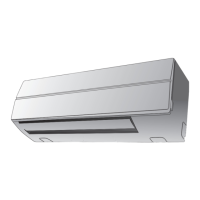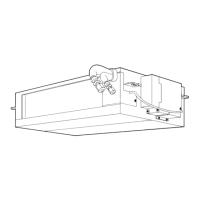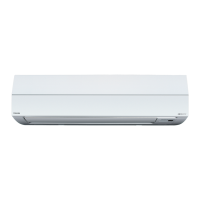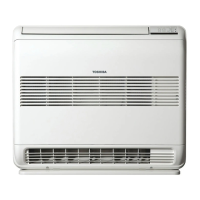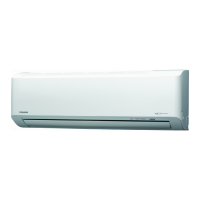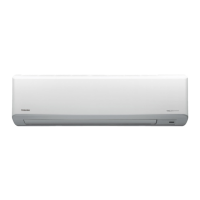
Do you have a question about the Toshiba RAS-M24N3KV2-E and is the answer not in the manual?
| Power Supply | 220-240V, 50Hz |
|---|---|
| Refrigerant | R410A |
| Indoor Unit Weight | 13 kg |
| Type | Split System |
| Cooling Capacity (kW) | 7.03 kW |
| Coefficient of Performance (COP) | 3.21 |
Detailed breakdown of the indoor unit components with part numbers and descriptions.
Specific breakdown of electrical components and sensors within the indoor unit.
Essential safety guidelines for handling R410A refrigerant during installation and servicing.
Details on selecting and using appropriate copper pipes and joints for R410A systems.
List of necessary tools, differentiating between R410A exclusive and general-use tools.
Overview of brazing filler materials and their suitability for joining pipes.
Explanation of flux purpose, types, and characteristics for effective brazing.
Procedure for brazing, including methods to prevent oxidation.
Overview of the air conditioner's control system, including indoor and outdoor unit roles.
Detailed description of various operational modes and functions of the air conditioner.
Explanation of the automatic restart function and its setup procedures.
Information on the remote controller, its functions, and operation.
Visual guide showing the placement and connection of indoor and outdoor units.
Details on optional installation parts required for unit setup.
Instructions for indoor unit installation, including placement and hole drilling.
Guidance on correctly installing refrigerant pipes and drain hoses.
Steps for securely fixing the indoor unit to the installation plate.
Proper methods for ensuring correct drainage from the indoor unit.
Procedure for selecting remote control mode A or B for multi-unit installations.
Instructions for performing a test run of the air conditioner.
How to enable the auto restart function after a power failure.
Initial checks for power supply, voltage, and basic operation status.
Methods for initial diagnosis of troubles, including LED indicators and remote controller checks.
Interpreting indoor unit LED flashing codes for self-diagnosis of faults.
Using the remote controller in service mode to retrieve and interpret error codes.
Troubleshooting guide based on specific symptoms observed during operation.
Procedures for checking main components like the P.C. board and other parts.
Guidance on testing the outdoor fan motor's functionality.
Step-by-step instructions for replacing main parts of the indoor unit.


